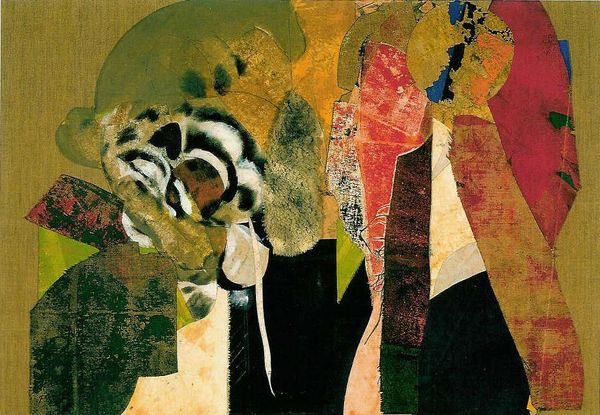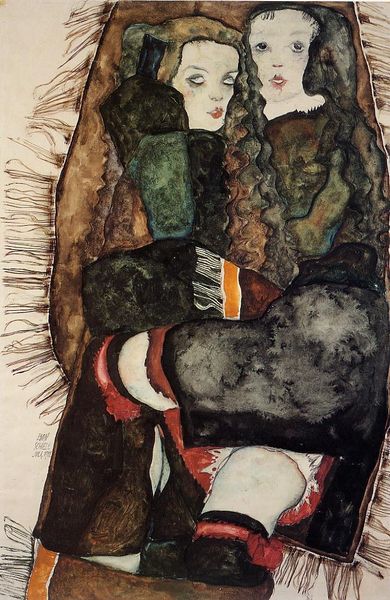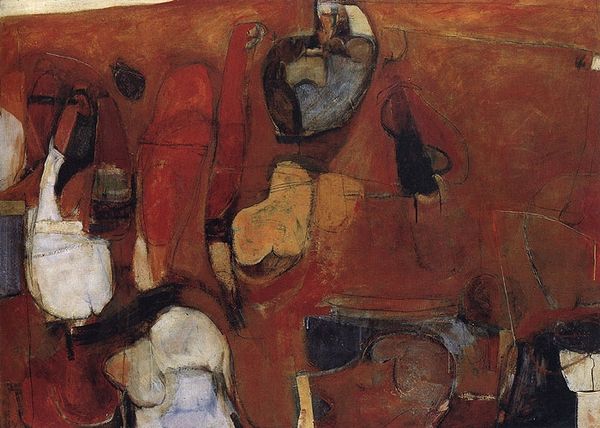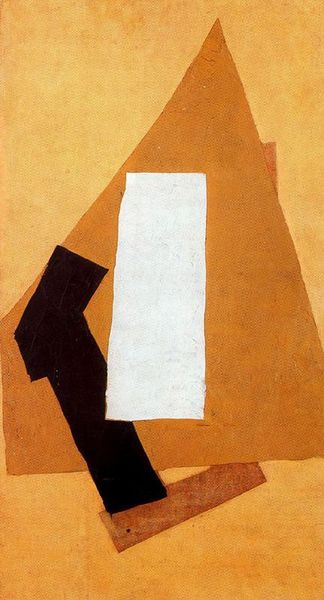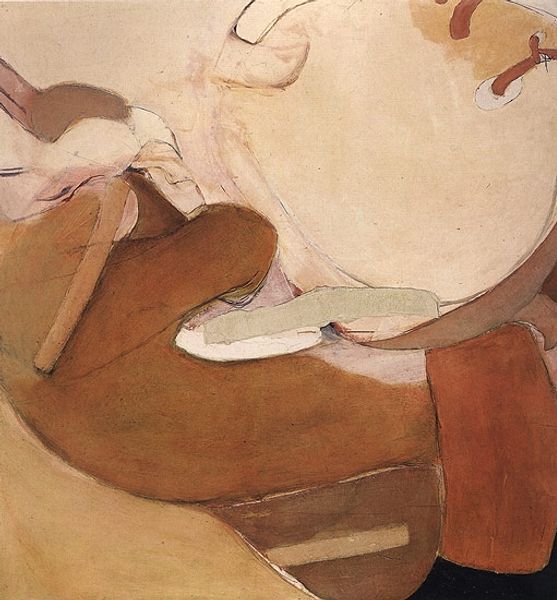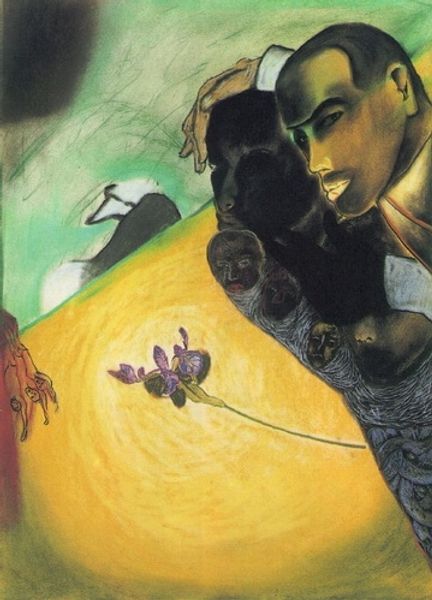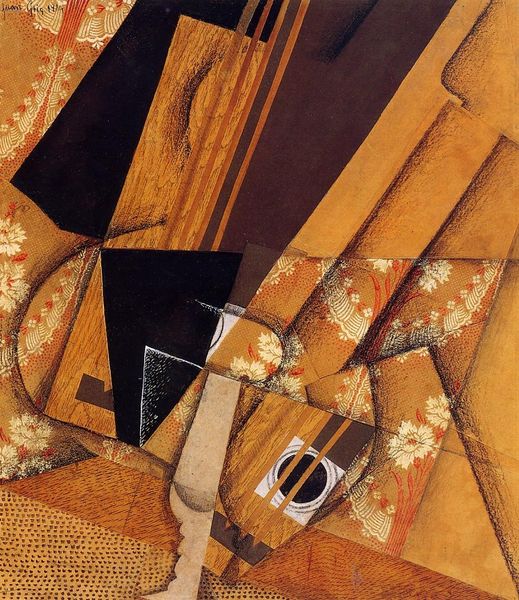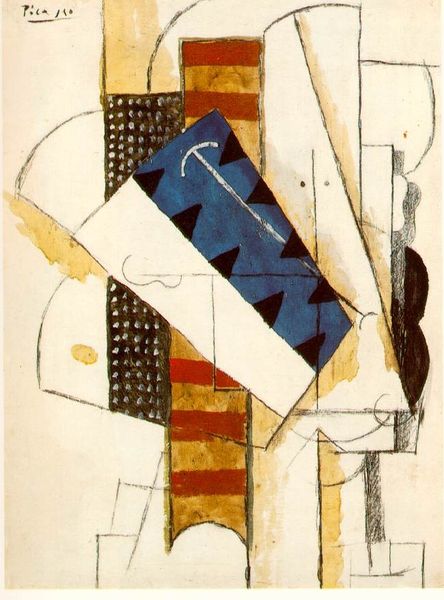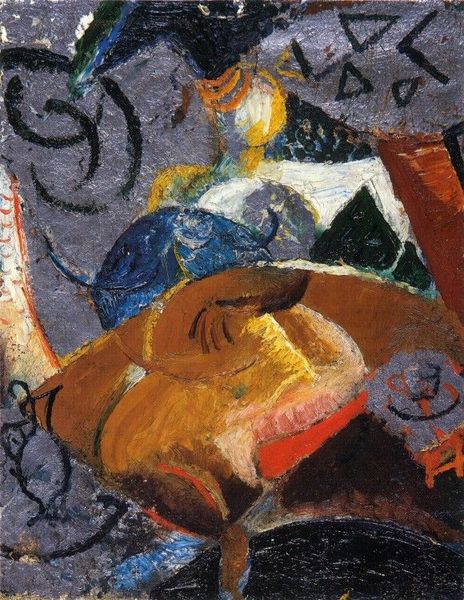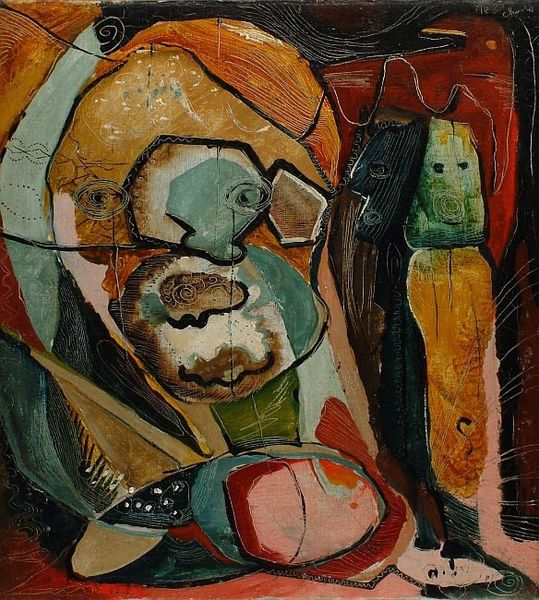
painting, acrylic-paint
#
acrylic
#
painting
#
acrylic-paint
#
figuration
#
oil painting
#
neo expressionist
#
neo-expressionism
#
abstraction
Copyright: Julio Pomar,Fair Use
Editor: This is "L'étonnement," an acrylic painting from 1979 by Julio Pomar. The image of a tiger feels very… fragmented, almost like it's bursting out of an abstract background. How do you interpret this work? Curator: It's fascinating how Pomar grapples with figuration here, placing a recognizable image—the tiger—within an abstract composition that, as you observed, threatens to overwhelm it. What strikes me is the implied political commentary. Consider the historical context: 1979, Portugal still feeling the aftermath of the Carnation Revolution. Could this fragmentation be a visual metaphor for a society grappling with change and the deconstruction of old structures? Editor: That’s a compelling reading! The idea of societal upheaval reflected in the fractured composition… I hadn't considered that. Does the tiger itself carry a symbolic weight in this context? Curator: Absolutely. The tiger, a powerful and often imperialistic symbol, seems to be pushing against its constraints. Pomar often critiqued the structures of power and control. The 'astonishment,' the painting’s title hints at, might not be the tiger's, but perhaps society’s at its own shifting identity, represented by this potent but fragmented image. Notice, also, how Pomar utilises this Neo-expressionistic style that allowed artists at that time to make commentary in more abstract and ambiguous terms. Editor: It's interesting that neo-expressionism allowed for that, especially considering that the public consumption of art has an inescapable relationship to politics. Do you see any specific movements relating to expressionism that influence Pomar's choices? Curator: I find clear hints of Analytical Cubism in the use of fractured surfaces, and how that lends to expressing something greater and arguably much more relevant at the time. Perhaps that Pomar saw analytical cubism as a good tool, given its cultural cache, that he would repurpose the movement as his own response and criticism. Editor: That’s such an interesting approach, making references to other influential movements and thus enriching his overall critique. I'll definitely look into Pomar's cultural references! Curator: Agreed! These political and art-historical layers, are, indeed, what make the painting such a compelling work.
Comments
No comments
Be the first to comment and join the conversation on the ultimate creative platform.
